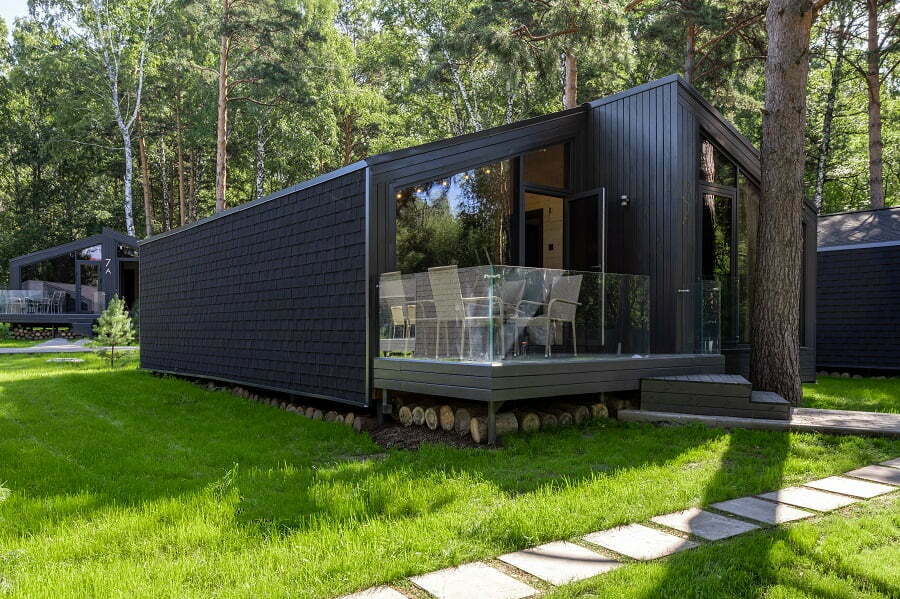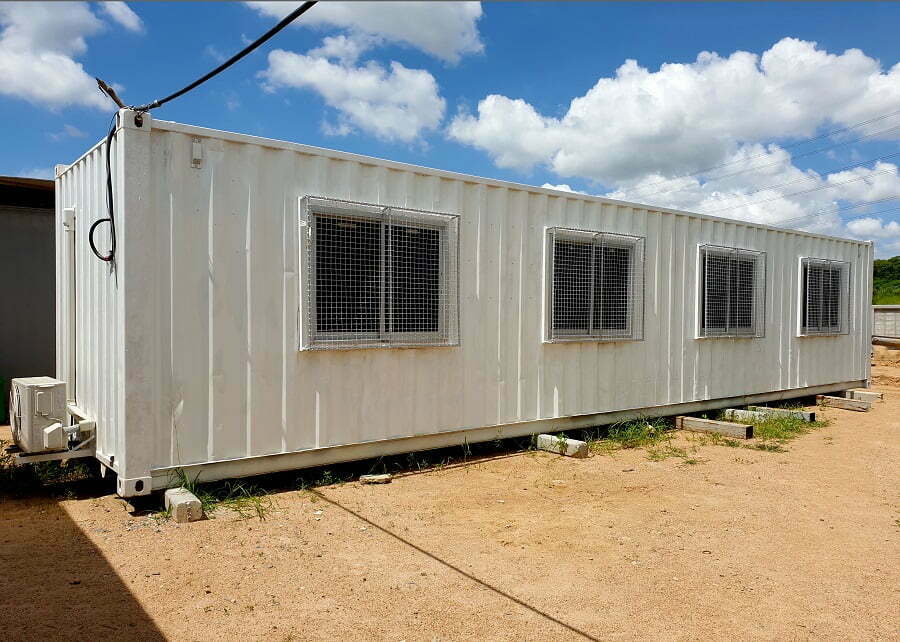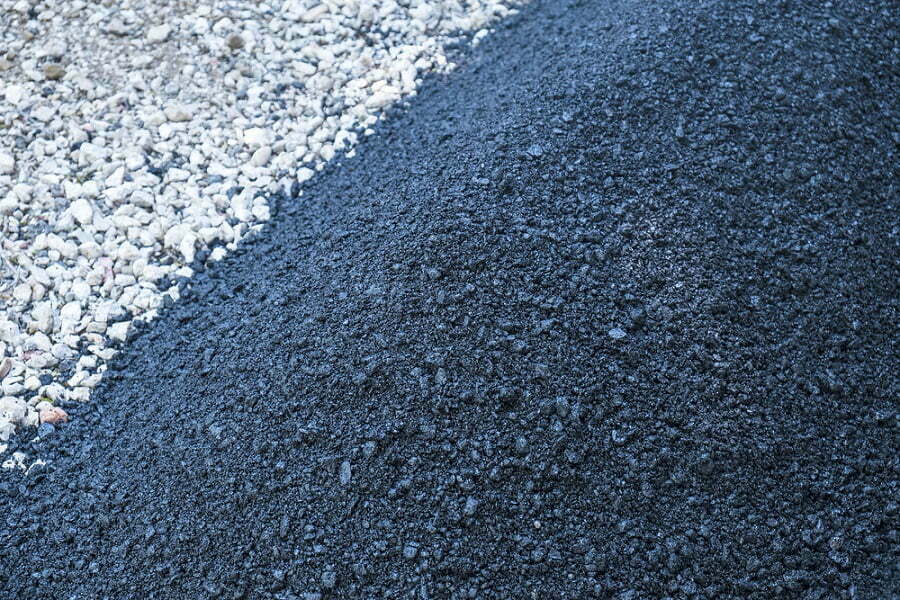Last updated on
You can say that a shipping container home is a type of prefab home. It is built off-site and can be transported. But there are some essential differences.
The key difference, in a nutshell, is that a shipping container is not intrinsically designed to be a house. It is adopted. On the other hand, prefab homes are designed to be dwellings. This poses some important differences that we need to consider.
In this article, we will make a complete comparison between the two types of homes and give you enough food for thought to make your conclusions.
Prefab Home

A prefabricated house that can be assembled in a factory and then shipped to the site. It’s made from pre-cut, ready-to-assemble prefab panels and other materials put together on-site as a prefab shell.
The advantage over traditional construction methods is speed: it takes less time to build than conventional building techniques. A prefabrication kit may contain all the components needed for all rooms such as kitchen, bathroom, bedroom, etc. Custom prefabricated homes are an excellent choice for those who want to build their own dream home.
They’re also a great option if you don’t have the time or resources to build a custom home. You’ll save money because there aren’t too many parts involved. Plus, you get exactly what you want when you buy a prefabricated home. If you like something about it, you can change it later (modular homes). On top of that, you can always modify the plans to suit your specific requirements.
Shipping Container Home

Shipping containers have long been used as an inexpensive way to transport goods around the world. They were originally designed by shipbuilders who wanted more space onboard ships so they could store cargo without having to load bulky items into smaller spaces.
In recent years, many people have taken up this idea and started using them as makeshift homes. These houses come in various sizes and shapes depending upon their intended use. Some are small enough to fit inside a standard truck while others require special trucks to move them.
There are also some larger versions available. Most of these types of buildings are usually built out of steel frames covered with plywood or corrugated metal sheets. Many of these structures are modular meaning you can take pieces off and add to your structure at any point during its life cycle. This makes it easy to expand if need be.
A lot of people think that shipping containers are just big boxes. However, they provide several benefits, including customizing them according to your needs.
For example, you can choose between different designs, colors, and even finishes. Moreover, you can make changes whenever you feel necessary.
Another benefit is that you will never run out of storage space. Since they are large, you won’t find yourself running short of space anytime soon. And lastly, they are pretty durable, though not as durable as prefab homes.
Shipping Container Units Used to Build Homes
There are two basic kinds of units found in shipping containers; single story and double story. Single story units consist of only one level whereas double story ones feature two levels. Both styles offer plenty of living area and work well for families.
Shipping container homes are very versatile and can easily accommodate both indoor and outdoor activities. Whether you decide to live in a unit full-time or rent it out part-time, you can enjoy the convenience of owning your own place. So for instance, you may opt to build a guest house or a home office in your backyard from a shipping container.
Differences Between Manufactured Homes and Shipping Container Homes
As mentioned, there are a lot of differences between manufactured homes and shipping container homes. Manufactured homes are typically constructed from prefab panels and modules. Shipping container homes are mostly made from steel frames covered in corrugated metal sheets. Also, most manufactured homes are permanent dwellings whereas shipping container homes are meant to be moved.
Manufactured homes are generally very heavy-duty homes that are built from panel walls of composite materials. This is a big difference from the shipping containers because the latter are not as structurally durable (they are not meant to be homes by design.)
On the other hand, shipping container homes are cheaper than manufactured homes. Their prices range from $10,000 to $40,000. They are portable which allows you to relocate them wherever you wish.
Unlike manufactured homes, they allow you to customize them to meet your own personal preferences. It’s possible to transform them into whatever type of house you desire.
You can build decks over them, install windows, doors, and appliances. Either way, there are no limits when it comes to designing your own custom shipping container home.
The Pros and Cons of a Prefab Home vs. a Shipping Container
- Effective Recycling – If you’re looking for an eco friendly option then shipping container houses may be what you need. These types of structures use recycled materials, i.e. shipping containers. This helps reduce waste while at the same time saving money on construction costs.
- Zoning Regulations – Your ability to build a home with shipping containers depends on the local government’s building codes and regulations.
- Cost Effectiveness – When compared to traditional housing options like stick frame construction, prefabrication offers significant savings. Shipping containers are even more so.
- Flexible Design Options – With prefabs, you get to design your own unique home. No two prefabs look alike. Though shipping containers look much the same, the ability to put many of them together saves the day.
- Durable Construction – Steel framing provides superior strength and durability. Prefab homes are more durable than shipping containers, though.
- Easy To Move – Once installed, prefabs and shipping containers homes are easier to move than conventional building methods.
- Customizable Designs – You can change the size, shape, color, and finish of your prefab home.
- Versatile Storage Space – If you want extra room, you don’t have to worry about finding an additional place to store things.
- Low Maintenance Costs – There are fewer materials involved so maintenance costs are lower with shipping containers.
- Efficient Use Of Land – Most prefabs require less area than their stickframe counterparts, shipping container are typically very compact.
- Environmentally Friendly – Many manufacturers use recycled material such as corrugated cardboard, wood pallets, etc.
- Affordable Housing Solutions – In many cases, prefabs and shipping containers are more affordable than stickframe houses.
- Convenient Transportation – Some prefabs come preassembled while others need only minimal assembly before being shipped out.
- Energy Efficiency – Since prefabs are usually designed using energy efficient techniques, they tend to consume less electricity. However, shipping containers are not built to be energy efficient.
- Better Value For Money – Compared to stickframe houses, prefabs provide better value for money because they’re more durable and long lasting. Shipping containers win over with their cheap price.
- Quicker Delivery Time – Due to their modular designs, shipping container homes typically arrive at job sites faster than prefabs.
- Less Labor Intensive – While some prefab may require several workers to complete a project, most shipping containers can be assembled by just 1 or 2 people.
- More Secure And Safe – Since prefabs are made up of prefab panels, they are stronger and more secure than shipping containers.
- Easier Installation Processes – Prefabs and shipping container homes are easier to set up than stickframe houses due to their smaller sizes.
- Higher Quality Materials Used – Manufactured with high quality materials that last longer, prefabs offer higher levels of safety and security.
- Long Lasting Roofs – Because roof trusses are used in prefabs, roofs will not deteriorate quickly.
- Stronger Structures – The walls and floors of prefabs are built strong enough to withstand earthquakes, strong winds, and extreme weather conditions.
- Increased Property Values – As time goes on, property values increase when homes become more attractive and desirable. This is especially true if the house has been custom-designed.
- Improved Home Security – Prefab homes are generally considered safe places to live. They are also very difficult to break into.
- Greater Safety Features – Metal framed structures are fire resistant which makes them ideal for areas prone to wildfires.
- Easy To Maintain – Steel frame construction requires little upkeep making it one of the easiest types of housing solutions available today.
- Flexible Design Options – With its wide range of design options, prefabrication allows homeowners to choose what suits their needs best.
- Customizable Designs – You can customize your prefab according to your preferences and budget.
- No Need For A Foundation Or Basement – Unlike stickframe houses, prefab buildings do not require foundations or basements.
- Low Maintenance Costs – Most prefabs have low maintenance costs as compared to other building methods such as brick and mortar.
- Versatile Uses – Many different uses exist for shipping containers including commercial spaces, offices, schools, hospitals, etc.
- Better Value Over Lifetime Cost – Prefabs provide better value over lifetime cost.
- Environmentally Friendly Construction Methods – Using fewer resources and having lower impact on the environment, prefabs are an environmentally friendly option.
- Quickly Built Houses – These days, many people prefer quick fixes rather than waiting around for long periods of time while they wait for contractors to finish their projects.
The Verdict
Shipping container homes may be the cheapest option to build a prefab home. But the quality is not quite there. They are not meant to be houses but can be adapted. Additional resources may be needed to insulate them and turn them into a dream home. While prefab homes offer that from the get-go, it comes with a higher price tag.
FAQ
Yes, prefab homes are more expensive than shipping container homes. But they also offer higher levels of customization and flexibility, as well as durability.
Shipping containers typically last between 20 and 30 years, depending on how well they were maintained before delivery. If properly stored, most shipping containers should withstand extreme weather conditions without any significant damage. However, if exposed to harsh elements, moisture may cause rust, leading to structural failure.
You certainly can. Most prefab homes have preinstalled roofs, but this isn’t always the case. Some manufacturers allow homeowners to customize their prefab homes by installing their roofs. This means that your new home has its unique look and feel.
Table of Contents
